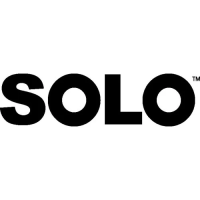
Do you have a question about the Solo 656 and is the answer not in the manual?
Dear Customer, Congratulations for choosing this SOLO quality product.
Prior to operating the unit, please read the owner's manual carefully, and most importantly, observe all safety rules. Packaging and disposal.
1.1 Notational conventions used in the operating instructions. Symbols for warnings and instructions used in the operating instructions.
Pictograms used in operating instructions, Emphasised text, Structure, Headers, Pictures and diagrams, 1.2 Copyright.
2.1 Correct use. 2.2 General safety instructions.
2.3 Prescribed work clothing. Recommends specific clothing for safe operation.
2.4 Fuelling. 2.5 When transporting the equipment.
2.6 During assembly, cleaning, maintenance and repair. 2.7 Before starting the tool.
2.8 Starting the tool. 2.9 When working with the saw.
First Aid. Notes on vibration effects.
3.1 Standard delivery. Lists items included with the chainsaw.
3.2 Designation of important controls and functional parts. Identifies key components.
3.3 Symbols on the equipment and on the type plate. Explains pictograms and data plates.
3.4 Components and functional parts under the cowl. Details parts accessed after removing the cover.
3.5 Throttle control lock and throttle control. Explains how to use the throttle lock.
3.6 Chain lubrication adjusting screw. How to adjust oil delivery.
3.7 Grip heating (models 651H / 656H only). Operation of heated handles.
3.8 Functional parts for starting up the chainsaw. Explains primer, decompression valve, starter.
3.9 Chain brake. Describes automatic and manual activation and testing.
3.10 Specification. Provides technical data for different models.
4.1 Assembly of the guide bar and chain. Step-by-step instructions for mounting.
4.2 Adjusting the chain tension. How to set and verify correct tension.
Fuel information. Mixing ratio for fuel and oil.
Fuelling. Steps for safely adding fuel to the tank.
Chain lubrication. How to check and maintain the system.
5.1 Starting positions. Safe ways to hold the chainsaw for starting.
5.2 Starting settings and start-up. Steps for cold and warm starts.
Cold start: Warm start: Detailed steps for starting the engine.
5.3 Engine will not start. Steps to diagnose and fix starting issues.
5.4 Switching the engine off. Procedure for stopping the engine.
6. Hazards caused by kickback. Explains kickback and its causes.
7. Using the chainsaw. Checklist for safe operation before, during, and after use.
7.1 Cutting to length. Techniques for cutting logs to size.
7.2 Cutting branches which are under tension. How to cut branches safely.
7.3 Removing branches. Procedures for safe branch removal.
7.4 Felling. Safety precautions and steps for felling trees.
8.1 Maintenance and care of the cutting gear. Information on saw chain types and care.
Sharpening the saw chain. Instructions for proper chain sharpening.
Notes on replacing the saw chain and the sprocket. Guidance on component replacement.
Guide bar: Maintenance of the guide bar for longevity.
8.2 Carburettor settings. How to adjust the carburettor for optimal performance.
8.3 Maintenance of the air filter. Steps for cleaning and replacing air filters.
8.4 Maintenance of the chain brake. 8.5 Vibration damping. 8.6 Spark plug information.
8.7 Replacing the fuel filter. Procedure for replacing the fuel filter.
8.8 Scheduled maintenance. Table of maintenance tasks and frequencies.
8.9 Self-help tips. Solutions for common problems.
8.10 Shutdown and storage. How to properly store the chainsaw.
9. Permissible cutting gear and further accessories. Lists compatible chains and bars.
Chain oil, BIO saw chain oil, engine oil, cleaners, servicing oil.
Grease gun, mixing can, carry-bag, electric sharpener, file guides, files.
Describes professional jackets and trousers for forestry work.
Details safety trousers and a fibre fur jacket for cold conditions.
Describes safety boots, splitter axe, wedge axe, and hammer.
Details gloves, safety helmets, and various outdoor trousers.
10. Parts subject to wear and tear. Lists components that are not covered by warranty.
11. Guarantee. Explains warranty coverage and exclusions.
12. CE Declaration of conformity. States compliance with EU directives.
13. For USA only: ECW Statement / Manufacturers Warranty Coverage.